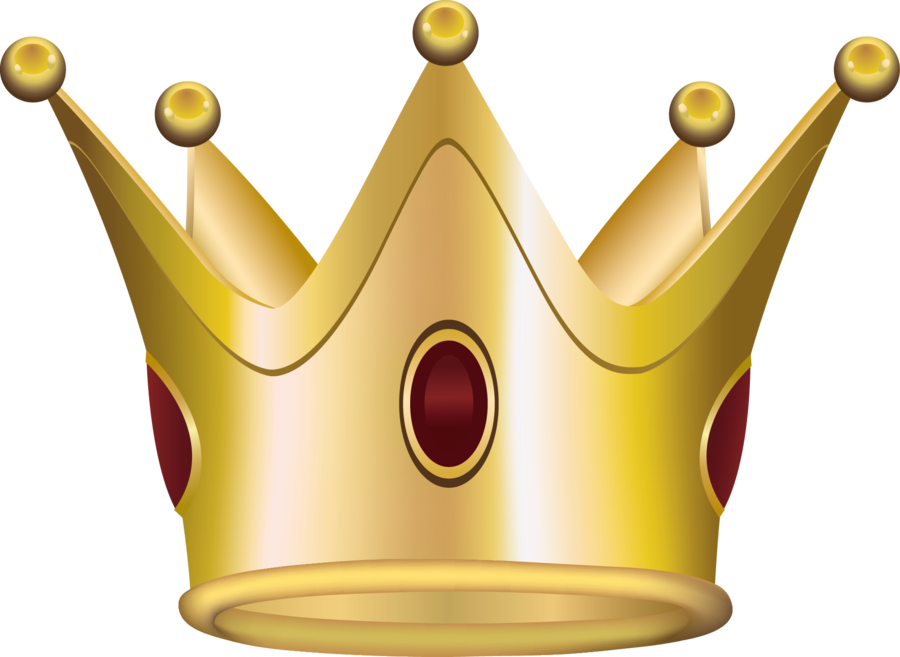
This image has format transparent PNG with resolution 900x657.
You can download this image in best resolution from this page and use it for design and web design.
Gold crown PNG with transparent background you can download for free, just click on download button.
A crown is a traditional symbolic form of headgear worn by a monarch or by a deity, for whom the crown traditionally represents power, legitimacy, victory, triumph, honor, and glory, as well as immortality, righteousness, and resurrection. In art, the crown may be shown being offered to those on Earth by angels. Apart from the traditional form, crowns also may be in the form of a wreath and be made of flowers, oak leaves, or thorns and be worn by others, representing what the coronation part aims to symbolize with the specific crown. In religious art, a crown of stars is used similarly to a halo. Crowns worn by rulers often contain jewels.
Crowns have been discovered in pre-historic times from Harayana, India. The precursor to the crown was the browband called the diadem, which had been worn by the Achaemenid Persian emperors. It was adopted by Constantine I and was worn by all subsequent rulers of the later Roman Empire.
Numerous crowns of various forms were used in antiquity, such as the Hedjet, Deshret, Pschent (double crown) and Khepresh of Pharaonic Egypt. The Pharaohs of Egypt also wore the diadem, which was associated with solar cults, an association which was not completely lost, as it was later revived under the Roman Emperor Augustus. By the time of the Pharaoh Amenophis III (r.1390-1352c) wearing a diadem clearly became a symbol of royalty.
The corona radiata, the "radiant crown" known best on the Statue of Liberty, and perhaps worn by the Helios that was the Colossus of Rhodes, was worn by Roman emperors as part of the cult of Sol Invictus prior to the Roman Empire's conversion to Christianity. It was referred to as "the chaplet studded with sunbeams” by Lucian, about 180 AD.
The Iron Crown of Lombardy, probably the most ancient royal insignia of Europe.
Perhaps the oldest extant Christian crown in Europe is the Iron Crown of Lombardy, of Roman and Longobard antiquity, used by the Holy Roman Empire and the Kingdom of Italy. Later again used to crown modern Kings of Napoleonic and Austrian Italy, and to represent united Italy after 1860. Today, the crown is kept in the Cathedral of Monza.
In the Christian tradition of European cultures, where ecclesiastical sanction authenticates monarchic power when a new monarch ascends the throne, the crown is placed on the new monarch's head by a religious official in a coronation ceremony. Some, though not all, early Holy Roman Emperors travelled to Rome at some point in their careers to be crowned by the pope. Napoleon, according to legend, surprised Pius VII when he reached out and crowned himself, although in reality this order of ceremony had been pre-arranged (see coronation).
Today, only the British Monarchy and Tongan Monarchy, with their anointed and crowned monarchs, continue this tradition, although many monarchies retain a crown as a national symbol. The French Crown Jewels were sold in 1885 on the orders of the Third French Republic, with only a token number, their precious stones replaced by glass, retained for historic reasons and displayed in the Louvre. The Spanish Crown Jewels were destroyed in a major fire in the 18th century while the so-called "Irish Crown Jewels" (actually merely the British Sovereign's insignia of the Most Illustrious Order of St Patrick) were stolen from Dublin Castle in 1907, just before the investiture of Bernard Edward Barnaby FitzPatrick, 2nd Baron Castletown.
The Crown of King George XII of Georgia made of gold and decorated with 145 diamonds, 58 rubies, 24 emeralds, and 16 amethysts. It took the form of a circlet surmounted by ornaments and eight arches. A globe surmounted by a cross rested on the top of the crown
Special headgear to designate rulers dates back to pre-history, and is found in many separate civilizations around the globe. Commonly, rare and precious materials are incorporated into the crown, but that is only essential for the notion of crown jewels. Gold and precious jewels are common in western and oriental crowns. In the Native American civilizations of the Pre-Columbian New World, rare feathers, such as that of the quetzal, often decorated crowns; so too in Polynesia (e.g. Hawaii).
Coronation ceremonies are often combined with other rituals, such as enthronement (the throne is as much a symbol of monarchy as the crown) and anointing (again, a religious sanction, the only defining act in the Biblical tradition of Israel).
In other cultures, no crown is used in the equivalent of coronation, but the head may still be otherwise symbolically adorned; for example, with a royal tikka in the Hindu tradition of India.
In this clipart you can download free PNG images: Crown PNG images free download